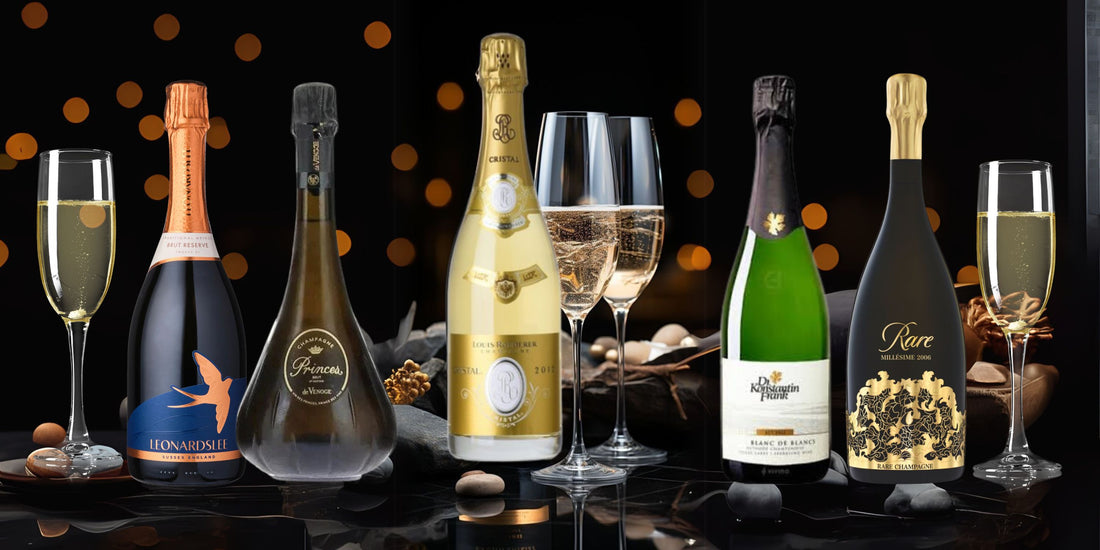The term "Champagne" is used to refer to sparkling wine produced exclusively within the Champagne region of France. Champagne is produced by inducing a secondary fermentation in the bottle (Methode Champenoise or Traditional Method). A labor intensive and costly method that produce a greater level of atmospheric pressure compared to sparkling wine using the Charmat method (second fermentation completed in a large tank), or by pumping CO2 to create the bubbles.
Method Champenoise results in finer, more persistent bubbles after opening the bottle. It is also grown on rich, limestone and chalk soil under cool climate conditions. These factors result in sparkling wines that are mostly terroir-driven with added depth of flavor.
The primary grapes used to make Champagne are Pinot Noir (red), Pinot Meunier (red), and Chardonnay (white). Chardonnay and Pinot Noir has the greatest level of finesse and potential for aging. Chardonnay is usually steely in its youth and Pinot Noir provides hints of red fruit and floral tones. Pinot Meunier immediately express floral and fruity appeal. When all three grapes are blended, like most Champagne, Pinot Meunier is the first to dominate the bouquet.
Champagne has four major districts and certain varietals grow better in certain districts. Within each district there is a hierarchy concerning grape production. The best grapes are grown in the best villages which are classified as Grand Cru, then Premier Cru (1er Cru), and followed by non-designated village grapes.
For example, the district of Montagne de Reims is known to produce some of the best Pinot Noir. The best villages (Grand Cru) within Montagne de Reims is Ambonnay, Ay, Bouzy, Vezenay, and Verzy (look for theses designated villages on the bottle label).
In the district of Cote des Blancs, Chardonnay is king and the best villages (all Grand Cru) are Cramant, Avize, and Le Mesnil-Sur-Oger.
In the district of Vallee de la Marne, Pinot Meunier grows best and the best villages (Premier Cru, 1er) are Dizy, Hautvillers, and Ste-Gemme.
Lastly we would like to decipher some important information that can be found on the label.
Sweetness levels:
Brut Nature: Very Dry, No Dosage.
Extra brut: Very dry, Usually no dosage.
Brut: Dry.
Extra Dry: Off-dry (slightly sweet).
Demi-sec: Medium sweet.
Doux: Sweet.
Please note: The information THE WINERY has provided is only touching the surface regarding this complex area of production. We hope this information helps when choosing your selection of Champagne.
Cheers!
